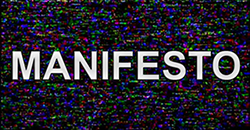15 Closing
Our opening hypothetical covers several of the concepts you’ve studied in previous chapters.
Study the following presentation slides by using the forward button or clicking on sections of the control bar.
In studying the opening hypothetical scenario, here are several considerations that should be familiar to you from previous chapters:
- Discouraging copycat behavior and avoiding any glamorization associated with media coverage of distressing events.
- Shielding viewers from potentially graphic or offensive content, including profanity.
- Avoiding a false ethical dilemma caused by emphasizing a neutral value (such as increasing web traffic and ad profit) over an ethical value (such as minimizing potential psychological harm to the audience and being accountable not to glamorize violent crime).
- Anticipating risks from broadcasting live scenes of ongoing crimes, trauma or disasters.
- Being transparent with audiences about sources and decisions in the reporting process.
- Finding an appropriate balance between objectivity and advocacy.
BROADCASTING LIVE
 Your most immediate decision is whether to broadcast live. You are familiar with the dangers of live reporting at a breaking-news site. You cannot fully control the environment, and you know there may be extremely emotional scenes in the background.
Your most immediate decision is whether to broadcast live. You are familiar with the dangers of live reporting at a breaking-news site. You cannot fully control the environment, and you know there may be extremely emotional scenes in the background.
Also, if you go live, you need to decide whether you will conduct any live interviews with school employees, parents or students. How will you coach your reporter to set up any potential interviews? Would you be exploiting some interview sources, especially if they are children, at a vulnerable time?
On the other hand, you know that two local television stations are already broadcasting live. Showing that your news organization is at the scene can lend credibility to your reporting.
For perspectives that have emerged since the 2022 school shooting in Uvalde, Texas, you can read the following:
• Rethinking culture that encourages journalists to be ‘vultures’ when reporting on mass shooting – Gateway Journalism Review
• Can journalists and grieving communities coexist in tragedy? – Associated Press
UNWARRANTED PUBLICITY
Another immediate decision involves whether to identify the 16-year-old shooter by name. If you have positive identification from several sources, do you still wait until you are sure that the shooter’s family has been notified and police release the name? Or should your outlet take a stance by not identifying the shooter at all (even though other reporters have already divulged the name)?
Truthful reporting involves giving specific, verifiable information when possible and appropriate. Information about the shooter’s background may help give context on why this tragedy occurred. On the other hand, some psychologists fear that giving publicity to the shooter may glamorize the action and lead to copycat crimes. Also, the shooter is a minor, which may be a factor depending on your newsroom’s policy in identifying minors in news stories.
According to the National Center for Health Research, “Studies indicate that the more media attention a shooter gets, the more likely the event will inspire a future mass shooter.” This “media contagion effect” can happen with suicides, terrorist attacks and mass shootings.
• Does media coverage inspire copy cat mass shootings? – National Center for Health Research
THE VIDEO
 As you ponder what to do (or not do) with the video manifesto, three broad options surface:
As you ponder what to do (or not do) with the video manifesto, three broad options surface:
Option 1 – Post the full, unedited video on your news site, possibly with a warning about content that some viewers may find offensive. The video can be launched with one or two clicks, and it will likely stir up interest from millions of viewers.
Option 2 – Post an edited version of the video on your news site. Your edited version will not include any profanity, and you will cut any racial slurs.
Option 3 – Briefly mention the video in your coverage, but do not post your own video and do not provide a link to the video if it emerges on other sites.
The following analysis from National Public Radio frames a viewpoint for part of the decision-making process:
• Why NPR isn’t using the word ‘manifesto’ – National Public Radio
ADVOCACY vs. OBJECTIVITY
 The owner’s plans to publish her own essay puts you in an awkward position.
The owner’s plans to publish her own essay puts you in an awkward position.
She is your boss and signs your paycheck, so you may feel compelled to follow her orders. You may even agree with her stance on gun control.
On the other hand, you may fear that her essay leans too far toward advocacy, especially considering how divisive the issue of gun control has become in your area. You will lose some loyal readers because they will not agree with the essay and therefore think your website’s content has become partisan.
And even if you agree with her essay, you may feel uncomfortable about sharing her essay on your personal social media accounts. For additional perspective watch this NBCU Academy video about professionalism on social media:
Professionalism on Social Media – NBCU Academy
CODE OF ETHICS
 Finally, the opening hypothetical gives us a chance to review and apply the four tenets of the Society of Professional Journalists’ Code of Ethics:
Finally, the opening hypothetical gives us a chance to review and apply the four tenets of the Society of Professional Journalists’ Code of Ethics:
- Seek Truth and Report It
- Minimize Harm
- Act Independently
- Be Accountable and Transparent
A rule-based approach emphasizing truth in reporting might lead you to allow viewers to see the video, and you can consider inserting a trigger warning to minimize harm for those who prefer not to view racially offensive content. To understand why this school shooting occurred, it may be helpful but unpleasant for the audience to see the video.
On the other hand, an ends-based approach might focus heavily on minimizing harm. Giving publicity to the 16-year-old shooter can glamorize his actions, especially to others his age. Also, the shooter may have mental and emotional problems that make the video seem more like a circus sideshow instead of content with actual news value.
In this case, acting independently can mean that you focus on what’s best for your audience, not what’s best for financial or career gain. Posting the video and identifying the shooter with abundant biographical information will no doubt increase website traffic and brand visibility, thus leading to more advertising revenue. You may even envision a future raise or promotion if coverage of the aftermath of this shooting continues for several months. Ultimately, though, you should avoid a false ethical dilemma that places your own gains or company profits ahead of ethical reporting.
Finally, because the shooter communicated with you and the reporter, your organization has played a small role in the evolution of the story. You should be transparent about the shooter’s communication with your newsroom and explain your decision-making process to your audience.
NEVER TRULY PREPARED
For first-person perspective from a professional journalist, you can read an essay by Brian Muñoz about covering a school shooting with compassion. It included this observation:
You can sit in journalism school classes and talk about theoretical scenarios on how to cover traumatic events, but it never truly prepares you, no matter how seasoned the journalist. The one thing at the top of my mind: empathy.
WRITE ABOUT IT
Write a short essay of approximately 500 words on how you would handle this situation. Support your decision-making process with concepts from this chapter and previous chapters. Use clearly organized paragraphs to explain your decision-making process for these items:
- Posting the video and naming the shooter
- Broadcasting live from the scene
- Responding to the owner’s plan to write an essay advocating for increased gun control measures and share it widely through social media
- Analyzing any potential conflicts of interest that pit personal gain against ethical conduct

